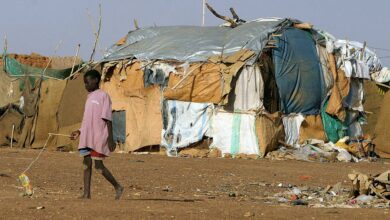Myanmar’s civil war: a deeply embedded conflict with no end in sight

By Eric San Juan
Ho Chi Minh City, Vietnam, Jul 11 (EFE).- More than a year after Myanmar’s military coup, the country continues to be mired in a conflict with no end in sight, even though the anti-junta forces seem to have gained some ground and have kept their morale high.
On Sunday, the United States’ Secretary of State Antony Blinken urged Southeast Asian countries to pressurize the Myanmar junta to restore democracy, while speaking in Bangkok, while Beijing has also urged the military top brass to hold talks with the pro-democracy opposition.
However, the rebels and civil militias hope to overthrow the junta militarily.
“We continue to push back Tatmadaw (the Myanmar military). Every day there is an all-out war, but I continue to be alive and take many photos,” Mauk Kham Wah (pseudonym), a 27-year-old photographer who joined the opposition forces in the state of Karen, close to the Thai border, told EFE through a messaging app.
The coup led by General Min Aung Hlaing on Feb. 1, 2021 and the subsequent bloody suppression of protests has resulted in thousands of young people picking up arms as the only way to protect democracy and bring down the military regime.
Wah had first joined the protests against the military, followed by carrying out sabotage and low-intensity violence and finally in October moving from Yangon, the most populated city of the country, to his native state of Karen to join the militias as a photographer.
In September, a month before Wah joined the rebels, the self-declared National Unity Government, formed parallel to the junta by activists loyal to ousted leader Aung San Suu Kyi, had already declared a “defensive war” against the regime.
Its armed wing, the People’s Defense Forces, consists of a string of groups in some parts of the country who have joined ethnic rebels or have been fighting on their own without being able to raise a federal, unified army.
In a report published by the Wilson Centre in May, analyst and professor Ye Myo Hein said that despite their obvious inferiority in weapons, the military balance has gradually shifted in favor of the anti-junta forces after a year of war.
However, the study warned that due to the lack of a centralized command and unified forces as well as shortage of arms, a decisive victory continued to be elusive for the opposition.
Other experts have also highlighted that the Myanmar military has failed to contain or crush the resistance forces in areas dominated by the Bamar community, which have historically been the main power center of the country.
According to reports, the PDFs ranks have swelled as the junta’s indiscriminate violence against entire villages has galvanized the opposition, taking the conflict to a point of no return.
More than one million people have been displaced in Myanmar according to United Nations data, including nearly 700,000 due to the conflict raging for the past one year.
Despite the official forces being superior in arms, the insurgent groups have made up for their material and organizational disadvantages with a high morale, unlike their opponents.
“The strength of this resistance is the complete support of the people,” a soldier of an anti-junta armed group told EFE recently.
After months of heavy fighting during the dry season, analysts expect the conflict to reduce to low-intensity battles ahead of the monsoon season, when both sides are expected to try and rearm themselves and improve organization, a factor that will help the pro-democracy forces according to analysts. EFE
esj/ia





